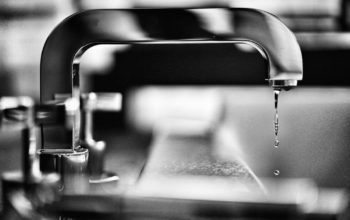No one wants their home to be damaged by water. It doesn’t make your home more beautiful and it doesn’t make it safer for your family.
In all aspects, it has devastating effects, as you can see here. However, it can be difficult to spot water damage and it’s just as difficult to prevent it, especially if it comes from the outside of your home.
How Water Damages Your Home
We sometimes imagine that water damage will come in the form of a huge flood or a pipe bursting or our sinks overflowing. However, this is always not the case. Homes are brought down by tiny holes no one noticed for months or a gutter blocked by some dirt or something similarly small and seemingly irrelevant.
Of course, it could be some event that you cannot predict or cure yourself. In those cases, it’s best to call the professionals to handle the damage.
Otherwise, small hiccups in your home system can mean a lot of money out of your pocket and a ton of health problems. But these are all events that are easy to fix. Most of the time, it’s preventable.
Preventing Water Damage
Some of these projects you may find easy but some may even seem scary – like clearing your gutters. So, if you feel like you might be in danger, call a professional to do these tasks for you and prevent water from damaging your home.
- Mind the downspouts – To test them out, you need to put water in your gutters. If the downspouts are flowing, then you don’t need to do anything else. If there are some issues, you could add an elbow here and an extension that would take the water a bit further away from the home. If the water from the downspouts flows too close to your foundation, it could erode the ground and risk leaks.
- Missed caulking – You need to caulk your windows from the inside and the outside if your caulking is missing or has been cracked in any way. Windows can leak water without caulking, so it’s a good idea to take care of this on time, especially before rains and storms.
- Grade the soil – The soil around your home should decline for about 5% in the nearest 10 feet. If not, pools will create around your home and this is not good for your foundation. It can seep to your basement. The farther the decline goes, the better it gets for your home. Here are some measurements you can follow: https://www.thespruce.com/slope-needed-in-land-grading-near-foundations-2132744
- Roof inspection – One of the weakest points of your home is your roof. It’s high up there and no one can notice if something happens to it. This results in water leaks to your attic and ultimately to your home. Of course, inspecting your roof is difficult and scary, as mentioned. You need to climb up there and it’s usually very high. So, if you’re not willing to do this, call a professional. They will look at your shingles and make sure that everything works properly.
- Clean gutters – As mentioned, gutters in your home are one of the most important parts because they can get clogged that causes water to enter your home. It can erode the soil around the house when the water spills over and this ruins your foundation. It can also leak through to the walls and floors. Cleaning them once or twice per year will mostly enable you to not worry about them, but if you notice any issues earlier, you can clean them sooner. As soon as ice dams fill up you should clean them.
When to Call a Professional and What To Do Until They Arrive
If water damage happens, after all, you should call a professional to handle it. People from https://sandiegodryexpress.com say that they will have enough equipment to clear any wet areas and they will decrease the wetness before any damage occurs.
It goes without saying that you should leave your home if the flooding is substantial, but if it’s not, then you should stay and try to do as much as possible before a professional arrives.
Here are some tips:
- Remove standing water – You might not be able to remove all of it, but some of it you can soak up the water with sponges and push it out. This will make the job easier for professionals. Drying standing water is often very difficult while getting rid of it through throwing it out is simpler.
- Use your tools – If you have air conditioning, turn it on as it will make your air less humid. If you have ventilation, you should turn it on as well since it will heat the air and thus it will carry the moisture more easily.
- Throw away any cheap items that got wet – Unless it’s something that you really love and the damage is not that big, throw away anything that’s cheap and wet. It will save professionals time when they come and they’ll be able to work properly. This could include any paper things that are not vital, cardboard, IKEA stuff since they will absorb water and won’t be able to work anymore, etc.


